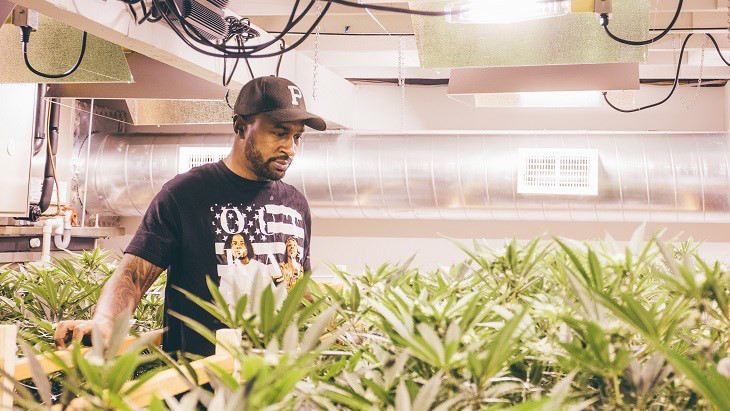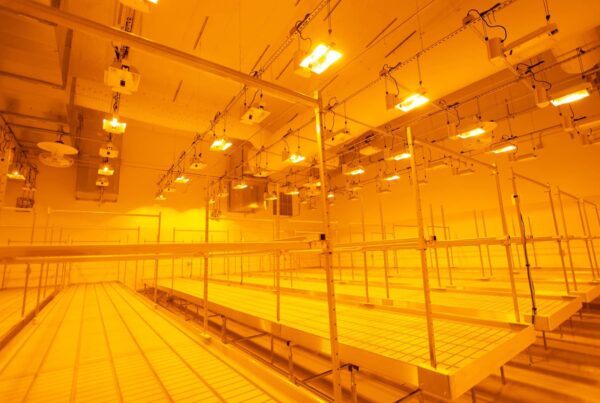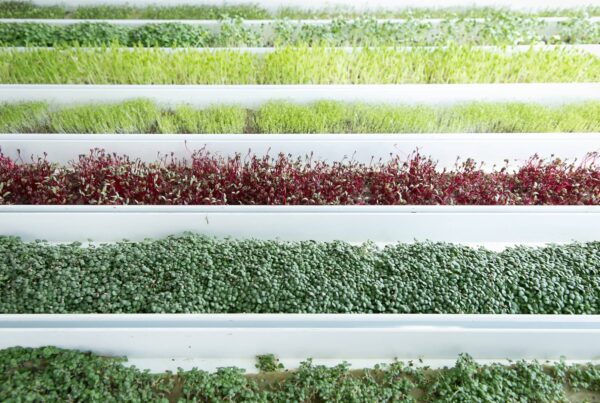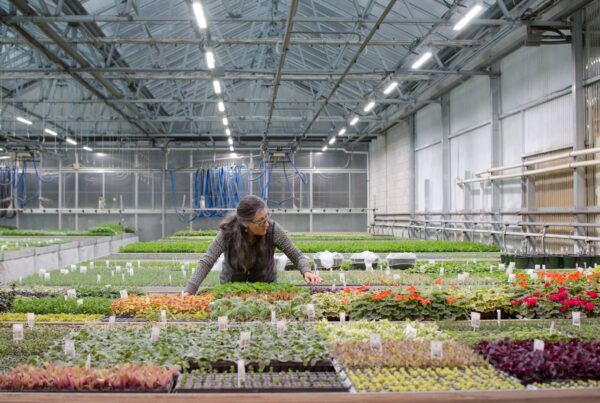Written by Jesce Horton, Panacea Valley Gardens and Saints Cannabis Portland, OR
When I decided to leave Siemens Industry to try my luck in cannabis cultivation years ago, I was eager to leave behind so many aspects of corporate engineering. The monotony and drudgery that corporate life was for me, seemed to melt away as I wrapped up my final project. However, the experiences I gained as an energy account manager carried over into my new profession. Especially the lessons learned while consulting industrial facilities on energy efficiency and environmental conservation, and the strong and dynamic role they play in business success.
So naturally, realizing the role that resources play in growing cannabis, cultivation type and methodology was something I assessed from several different angles in the development of Panacea Valley Gardens. When beginning in cultivation I tried numerous different energy and water saving techniques including different lighting technology, heat exchangers, water-cooled equipment, automation, water reuse, alternative timing tricks (e.g. 11 hours of flower instead of 12) and many of these in greenhouse and indoor applications. We even tried our hand at full outdoor cultivation in rainy Portland, Oregon (silly us). Some of these trials worked better than others and many are in use in some form at Panacea Valley Gardens now. The most successful techniques and processes are a cornerstone in the development of my new facility, Saints Cannabis in northeast Portland.
Ultimately, my assessment method on how to choose between outdoor, greenhouse and indoor cultivation types comes down to the “3 E’s”. Ok, I know what you are thinking…one of these “e’s must to stand for “energy” or “efficiency” or maybe even “energy efficiency”. Well, you’re wrong. Energy efficiency is an end goal and not so much a decision factor in this assessment. Reaching sustainability, as measured by resource (energy and water) efficiency, is a continual adjustment process that can be achieved whether one is growing outdoors or in a warehouse. There is an efficiency or sustainability component to each decision you make in your facility. Therefore the three “E”s are how I chose my grow type for business success, not just resource efficiency.
Here they are, in no particular order:
- Environment – Where is your operation located? If like me, you’re in the Pacific Northwest, outdoor cultivation or simple greenhouses just won’t work. The rainy season comes at a crucial time in harvest season and with it comes humidity, cold weather, and problems. Partly due to the environment, indoor is king in the Pac NW, but light deprivation greenhouses are becoming popular also. Depending on where you are located, some options may be less feasible than others.Environment and location also play a large role in your sustainability profile. How does your power company source its energy? Coal, hydro, renewables, natural gas or other? This matters in assessing your true carbon footprint. How cold or hot does your region get on average? How will this affect your heating and cooling needs?
- Expertise – The success of a cultivation operation has a great deal to do with one key member of your team? Who’s that? The cultivator. Do you have a cultivation team member who knows how to grow in a light deprivation greenhouse like tying his shoe? Are you working with a cultivation team that has been growing outdoor cannabis in Northern California for 20 years? Are these people you trust and can depend on, no matter what? Well, you may want to consider them in the design of your facility. I’ve seen some of the most amazing outdoor growers melt down in an indoor environment. Some indoor growers just simply don’t thrive in organic, no till greenhouse methodologies. I’m not saying base your whole business plan off preference of the head grower, but I’m saying make sure they are intimately involved in the decision. A lost crop or poor yields or quality could erase the gains in resource efficiency very quickly.Regardless of your equipment and building types, the leader of your facility will have a far greater impact on the level of resource efficiency. The most sustainable companies, in my experience, always had an “energy champion” or someone who is tied to this important aspect of success. If your cultivation expert is bought into this idea, your results will certainly be reflective.
- End User (customer) – What is the preference in your region? What do your patients/customers want? Where can you win? This could be the most important factor in selection of grow type. There are some regions where the mere word “outdoor or greenhouse” gets a door slammed in your face at some dispensaries on vendor day (ok, maybe not that bad, but still pretty harsh). I know in other regions, greenhouse flowers may be a standard and do not carry a lower perceived value in the market. You must know your market before making such an important decision.
Sustainability will prove to be a strong differentiator in the cannabis market. In an industry where products are moving closer to being viewed as traditional commodities, consumers are caring more about company principles and how products are produced. Customers are asking more and more questions about responsible practices. Perhaps you drive the need for more acceptance of your greenhouse flower by proving you’re more environmentally responsible than the indoor flower in the store. Perhaps you can prove your indoor facility is sustainable enough to compete in a sun grown (greenhouse or outdoor) market.
With these things in mind, we decided on a mixed-use cultivation method at PV Gardens and Saints Cannabis with roughly double the amount of greenhouse as indoor canopy space. This has allowed us to meet market demands, keep overhead costs lower, and reduce the carbon footprint and water usage in our facilities.
Choose your cultivation type in a similar fashion, based on factors that will affect your ability to thrive in your market conditions. Then make resource efficiency a cornerstone in the development of your business.
Can you think of any other “E’s” that should be considered? What else played a crucial role in your cultivation type decision?
Jesce Horton is a board member of the Resource Innovation Institute.






